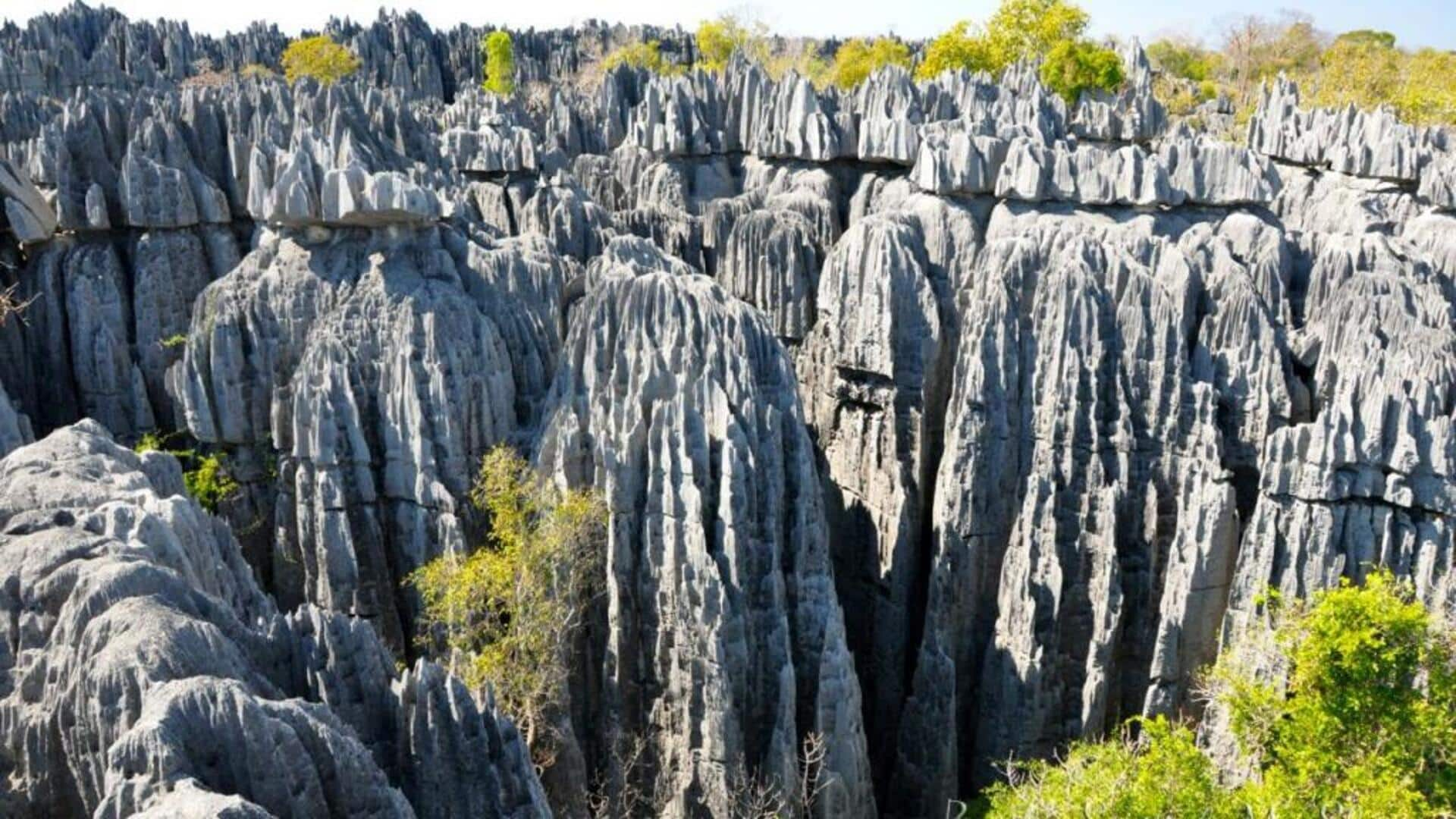
Madagascar's stone forests: A trekker's paradise
What's the story
Madagascar's stone forests are a unique natural wonder that promises an adventure like no other. These forests, filled with limestone formations, create a surreal landscape that attracts trekkers from all over the world. The challenging terrain and breathtaking views make it an ideal destination for those looking for an offbeat adventure. Exploring these stone forests can be an unforgettable experience for nature lovers and adventure seekers alike.
#1
Discovering Tsingy de Bemaraha
Tsingy de Bemaraha is one of Madagascar's most famous stone forests. A UNESCO World Heritage site, it is known for its razor-sharp limestone pinnacles. The forest is home to several endemic species, making it a hotspot for biodiversity. Trekkers can explore its narrow passageways and climb its towering formations, but they must be cautious due to the rugged terrain.
#2
Navigating Ankarana Reserve
Ankarana Reserve is another amazing destination for those looking to explore Madagascar's stone forests. The reserve features a maze of limestone karst formations, caves, and underground rivers. Trekkers can go on guided tours to discover the reserve's hidden gems while learning about its geological significance. The reserve also offers opportunities to spot lemurs and other wildlife in their natural habitat.
#3
Preparing for your trek
Before you head out on your trek through Madagascar's stone forests, make sure you are well-prepared. Wear comfortable hiking shoes with good grip as the terrain can be rough. Carry plenty of water and snacks as there are limited facilities in remote areas. A local guide can enhance your experience by providing insights into the region's ecology and culture.
Tip 1
Tips for responsible trekking
When trekking through Madagascar's stone forests, it's essential to practice responsible tourism. Stick to marked trails to avoid damaging delicate ecosystems. Don't litter; carry out all waste to preserve the natural beauty of these areas for future visitors. Respect local customs and communities by engaging with them positively during your visit, ensuring a mutually beneficial experience for all involved.